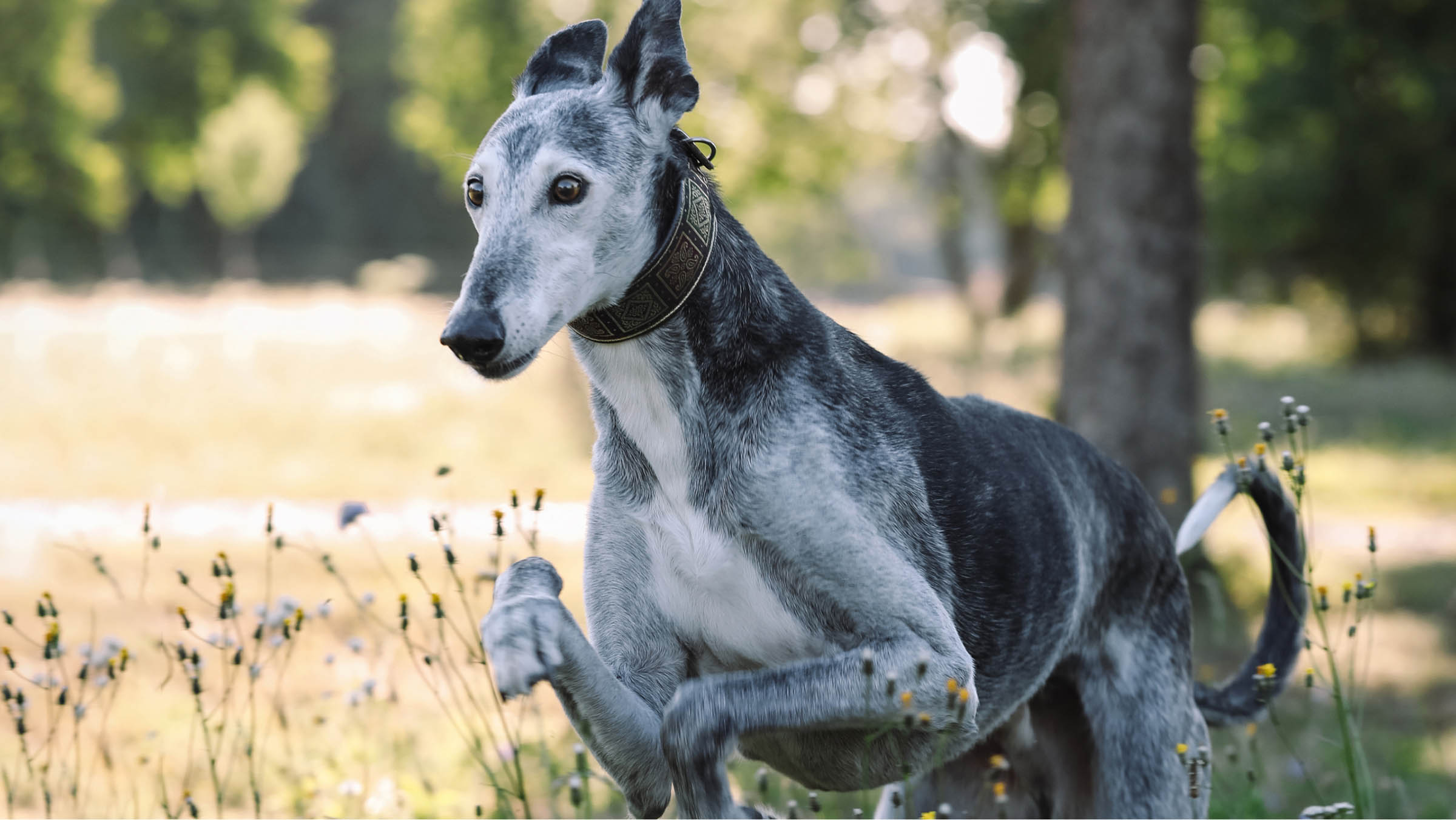
Tips for healthy joints
Healthy dog joints are unfortunately not a given - especially in older four-legged friends. This is because the risk of chronic diseases increases with age and the joints are a typical "weak point" in dogs: Chronic joint diseases such as osteoarthritis are a common clinical picture that is accompanied by a gradual breakdown of the joint cartilage and they can also affect other structures involved in the joint such as ligaments, tendons and bones.
Promoting and maintaining healthy dog joints
As osteoarthritis cannot be cured, it increasingly restricts the mobility and thus the quality of life of affected animals as it progresses - primarily due to pain during movement. Dog owners should therefore actively promote the health of their dog's joints right from the start. Read on to find out what you can do in everyday life to protect your dog's joints.

PREVENTION
Take acute injuries seriously
Acute injuries to the musculoskeletal system such as blunt trauma, which can lead to bruises, strains or sprains, should be taken seriously by dog owners - even if the injury initially appears harmless. This is because every trauma triggers an inflammatory process in the tissue, which is intended to create optimum conditions for the healing process. However, if the inflammatory reaction does not take the right course, this can result in consequential damage and promote the development of a chronic condition with permanent movement restrictions.
To maintain healthy dog joints, injuries to the musculoskeletal system should therefore always be seen by a veterinarian and treated if necessary. Natural veterinary medicines can provide good service in the treatment of mild to moderate trauma and promote the healing process.
Reduce excess weight
As with humans, too much weight damages a dog's joints as they are exposed to greater stress. This can lead to poor posture, pain during exercise and the development of chronic joint diseases. Regular weight checks are therefore important at every stage of a dog's life in order to maintain healthy joints. If excess weight is detected, it should be continuously reduced through plenty of exercise and an appropriate diet.
If joint problems are already present, weight reduction, for example by means of diet dog food, is urgently recommended in order to relieve the stressed joints as quickly as possible. The veterinarian can give helpful tips on appropriate nutrition.
Regular and appropriate exercise
Regular exercise is essential for healthy dog joints. This is because the joint cartilage can only be supplied with sufficient nutrients by loading and unloading it.
To protect the joints, any sporting activity should begin with the dog first warming up by walking loosely. Preferably, the run should take place on soft ground such as a forest floor or meadow because a soft surface absorbs movement better than asphalt or stone and this can prevent overloading and wear and tear on the joints.
A high degree of freedom of movement is also crucial for healthy dog joints. Abrupt stops or tight changes of direction should be avoided as far as possible. This is because the joint can only be adequately supplied with joint nutrients if it is moved in its entirety. But as important as regular exercise is, the type and amount of exercise should be adapted to the breed and age of the dog.
For example, dog sports with a high risk of injury, such as agility, are not advisable for every dog. Swimming, on the other hand, is a sport that promotes healthy dog joints, as the entire musculature is exercised while the joints are not strained due to the buoyancy of the water. For older dogs, the exercise program should ideally be individually adapted to their constitution in consultation with the veterinarian. If in doubt, moderate but regular exercise is preferable.



